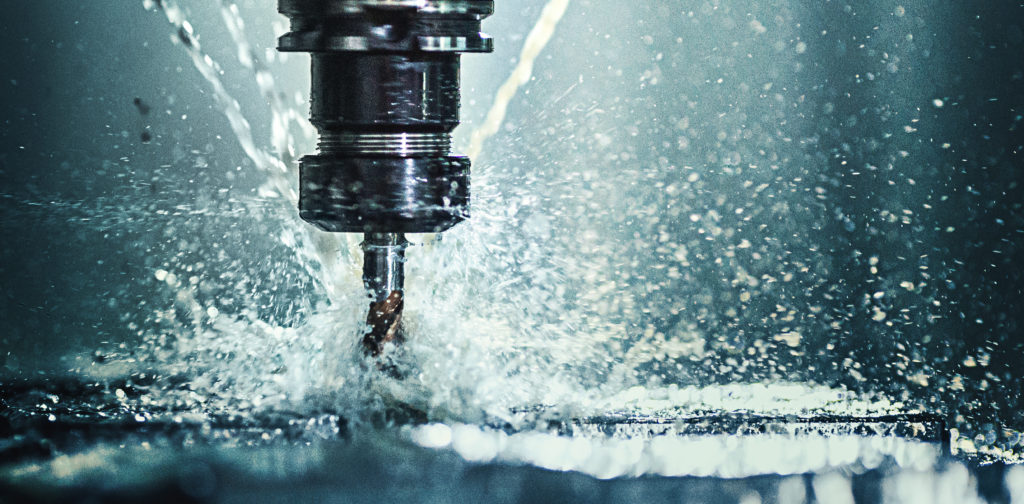From September 18th to 23rd, the EMO trade exhibition is scheduled in Hannover. Here, the Biberach-headquartered sharpening expert, Vollmer, is all set to display its latest array of sharpening machines and services. In Hall 6 at Booth F32, the manufacturer will exhibit its range of automated grinding, eroding, and laser machines designed to process tools crafted from ultra-hard cutting materials like PCD, CBN, or carbide. Alongside the machines, Vollmer will also share insights into its maintenance and training services and digital solutions through V@dison. Additionally, products from Vollmer’s subsidiaries Loroch and ultraTEC Innovation will also be on display at the EMO booth.
Recognized globally as a paramount production technology trade show, EMO is emphasizing on the integration of products and services more than ever. This setting perfectly aligns with Vollmer’s objective of showcasing its machines, services, and digital solutions. As a comprehensive provider, Vollmer incorporates all production technologies to manufacture rotary tools along with circular and band saws, irrespective of the cutting material utilized.
Tool Manufacturing with Grinding, Eroding, and Laser Technologies
The primary product showcased by Vollmer at EMO will be the VHybrid 260 grinding and eroding machine, capable of grinding and eroding up to 100 cutting tools. The machine features multi-tier machining, facilitated by two vertically arranged spindles. The lower spindle is designed for both grinding and EDM. Thanks to a new V@dison booster solution, the VHybrid 260 can achieve surface quality up to 0.05µm Ra when eroding PCD tools. This digital application allows the integration of EDM as a comprehensive manufacturing process in tool production. The Vpulse EDM generator ensures that even the smallest micro tools, with diameters of 0.5mm or less, are manufactured with supreme precision, performance, and surface quality. The integrated ‘Laser Check’ measuring system guarantees high-precision machining and fully automatic closed-loop round machining, achieving tolerances of ±2µm.
Automated Solutions for All Sharpening Machines
Vollmer’s VGrind 360S tool grinding machine, which will also be on display at EMO, embodies the concept of multi-tier machining. The focus will be on machining CBN tools and how tool manufacturers can customize their production with the machine, irrespective of whether they manufacture special tools or mass-produce tools. With suitable automation solutions like the new HP 170 pallet magazine, the HPR 250 free-arm robot, or the HC4 chain magazine, the VGrind 360S is ideal for unmanned, round-the-clock machining. The HP 170 offers optional integration of optical detection of cooling channels. Moreover, up to eight grinding wheel packs, inclusive of the coolant supply, can be automatically changed.
The VLaser 370, another Vollmer machine to be showcased at EMO, can process ultra-hard materials directly at the pivot point, courtesy of patented kinematics that ensure fewer compensating movements for high-precision tool production. Besides these machines, Vollmer will also display the products and services of its subsidiaries Loroch and ultraTEC Innovation. Loroch specializes in machines for sharpening circular saw blades while ultraTEC Innovation provides ultrasonic deburring systems that allow contactless and resource-efficient deburring of metal or plastic components.
Vollmer’s Service and Digital Solutions
Vollmer concludes its EMO trade show presence with services for maintenance, repair, training, financing, and digitalization. These offerings include the digital initiative V@dison, which integrates the V@ boost solution ‘Performance Package for the VHybrid 260.’
Jürgen Hauger, Managing Director of the Vollmer Group, states, “The positioning of EMO as the world’s leading trade fair for production technologies aligns perfectly with our corporate philosophy since we provide global sharpening technologies for high-precision and automated tool manufacturing. We offer not just a specific process, but the exact process that customers need. Moreover, we supplement our machines with tailored services and digital solutions to optimally support tool manufacturers and sharpening services in automated and cost-efficient production.”

